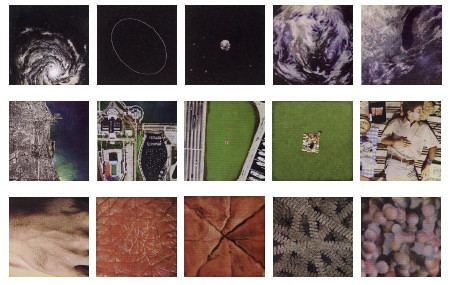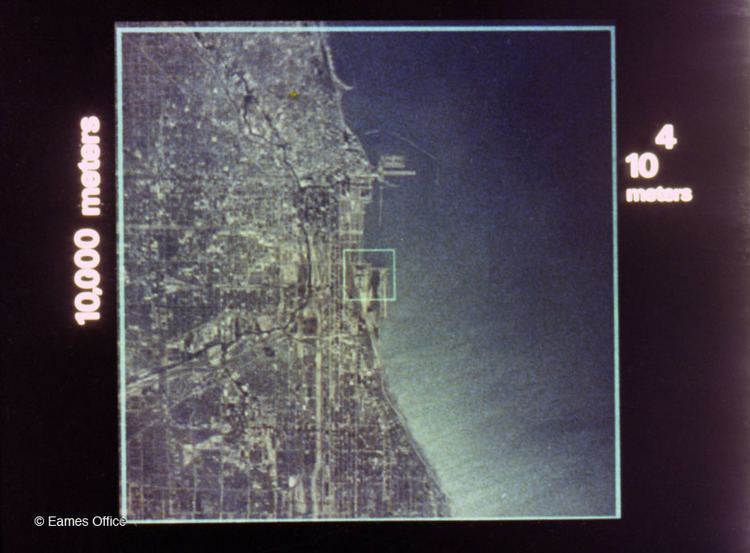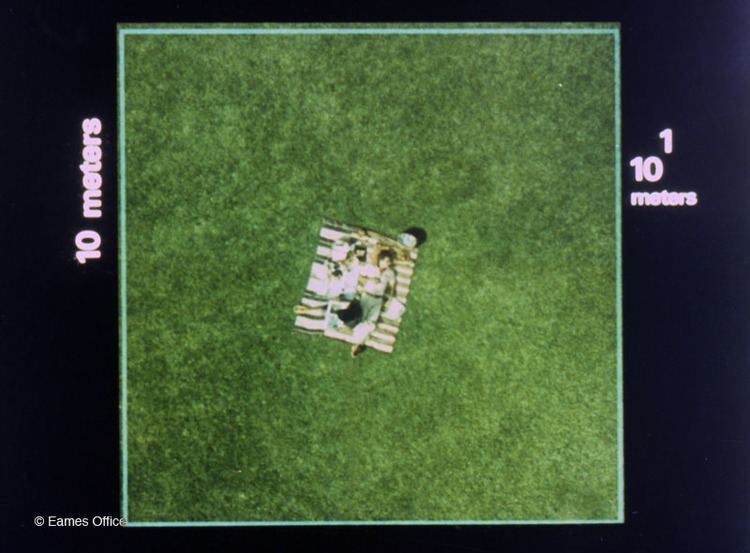Powers of Ten (film)
8.2 /10 1 Votes
Duration Language English | 8/10 IMDb Genres Short Film, Documentary Country United States | |||||||||||||||||||||||||||||||||
 | ||||||||||||||||||||||||||||||||||
Director Charles Eames, Ray Eames Release date 1968 ("Sketch" version)1977 ("Final" version) Similar movies Pacific Rim , Paperman , IMAX 3D Deep Sea , Grand Canyon Adventure: River at Risk , IMAX - Roving Mars , IMAX: Born to Be Wild | ||||||||||||||||||||||||||||||||||
Powers of ten 1977
The Powers of Ten films are two short American documentary films written and directed by Charles and Ray Eames. Both works depict the relative scale of the Universe according to an order of magnitude (or logarithmic scale) based on a factor of ten, first expanding out from the Earth until the entire universe is surveyed, then reducing inward until a single atom and its quarks are observed. The first film: A Rough Sketch for a Proposed Film Dealing with the Powers of Ten and the Relative Size of Things in the Universe — was a prototype and was completed in 1968; the second film: Powers of Ten: A Film Dealing with the Relative Size of Things in the Universe and the Effect of Adding Another Zero — was completed in 1977.
Contents

The Powers of Ten films were adaptations of the book Cosmic View (1957) by Dutch educator Kees Boeke. Both films, and a book based on the second film, follow the form of the Boeke original, adding color and photography to the black and white drawings employed by Boeke in his seminal work.

The 1977 film has a number of changes from the prototype, including being entirely in color, moving the starting location from Miami to Chicago, removing the relativistic (time) dimension, introducing an additional two powers of ten at each extreme, a change in narrator from Judith Bronowski to Philip Morrison, and much improved graphics.

In 1998, Powers of Ten (1977) was selected for preservation in the United States National Film Registry by the Library of Congress as being "culturally, historically, or aesthetically significant".

1968 ("Sketch") version

This version of the film has two clocks in the corner showing the comparison between the viewer's time and that of earth time. As the viewer's speed increases, earth time, relative to the viewer, also increases. It was installed in the Smithsonian Institution's National Air and Space Museum's Life in the Universe gallery at the time of the museum's opening in 1976, until the gallery's closure in 1978.

There is also a 1968 National Film Board of Canada film entitled Cosmic Zoom which covers the same subject using animation. It is wordless, using sped-up music during the return trips to normal size.
1977 ("Final") version

The film begins with an overhead view of a man and woman picnicking in a park at the Chicago lakefront — a one-meter-square overhead image of the figures on a blanket surrounded by food and books they brought with them, one of them being The Voices of Time by J. T. Fraser. The man then sleeps, while the woman starts to read one of the books. The viewpoint, accompanied by expository voiceover by Philip Morrison, then slowly zooms out to a view ten meters across (or 101 m in scientific notation). The zoom-out continues (at a rate of one power of ten per 10 seconds), to a view of 100 meters (102 m) (where they are shown to be in Burnham Park, near Soldier Field, then 1 kilometer (103 m) (where we see the entirety of Chicago), and so on, increasing the perspective and continuing to zoom out to a field of view of 1024 meters, or the size of the observable universe. The camera then zooms back in at a rate of a power of ten per 2 seconds to the picnic, and then slows back down to its original rate into the man's hand, to views of negative powers of ten—10−1 m (10 centimeters), and so forth—until the camera comes to quarks in a proton of a carbon atom at 10−16 meter.
Related books
Related films
References
Powers of Ten (film) WikipediaPowers of Ten (film) IMDb Powers of Ten (film) themoviedb.org
